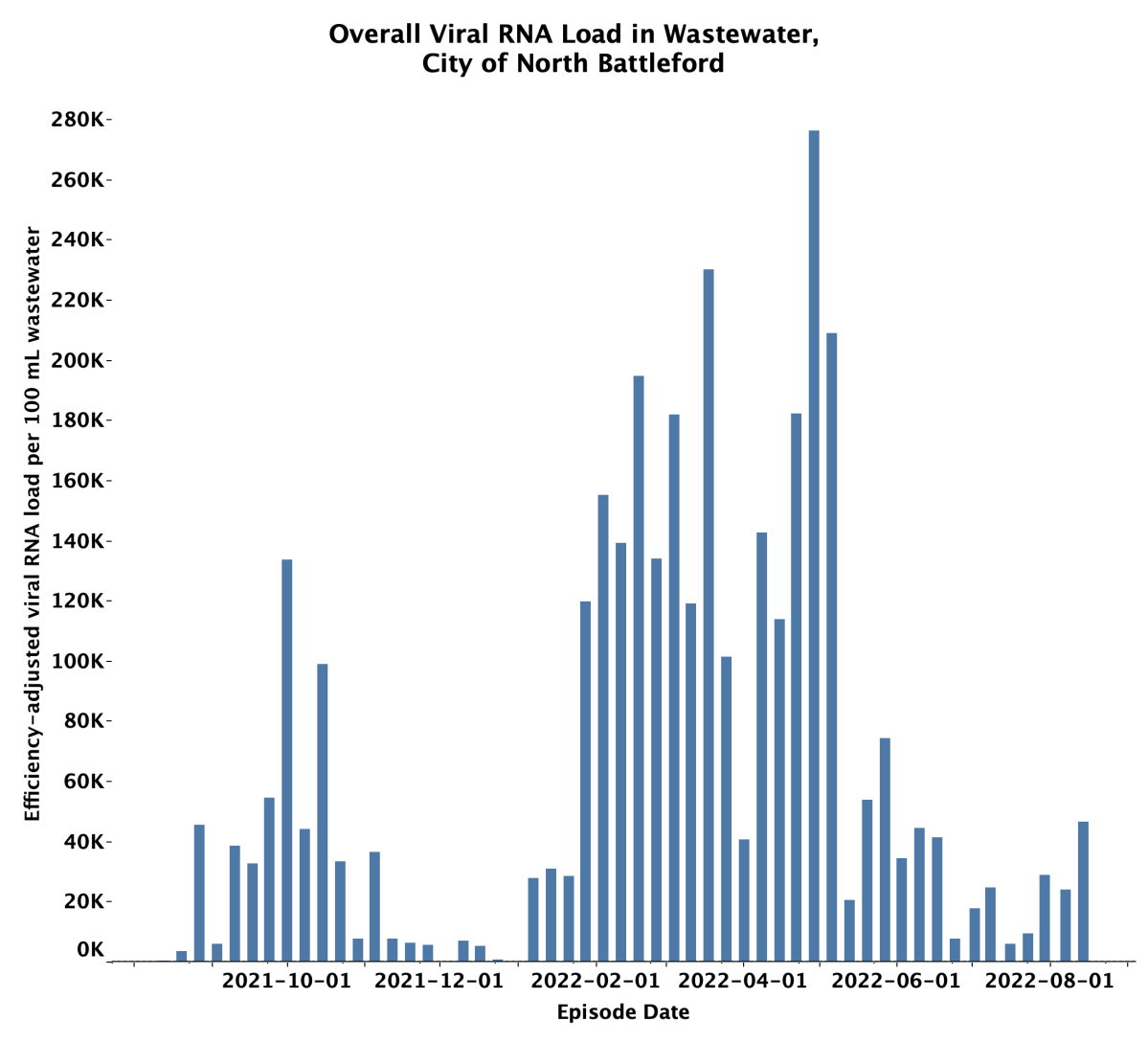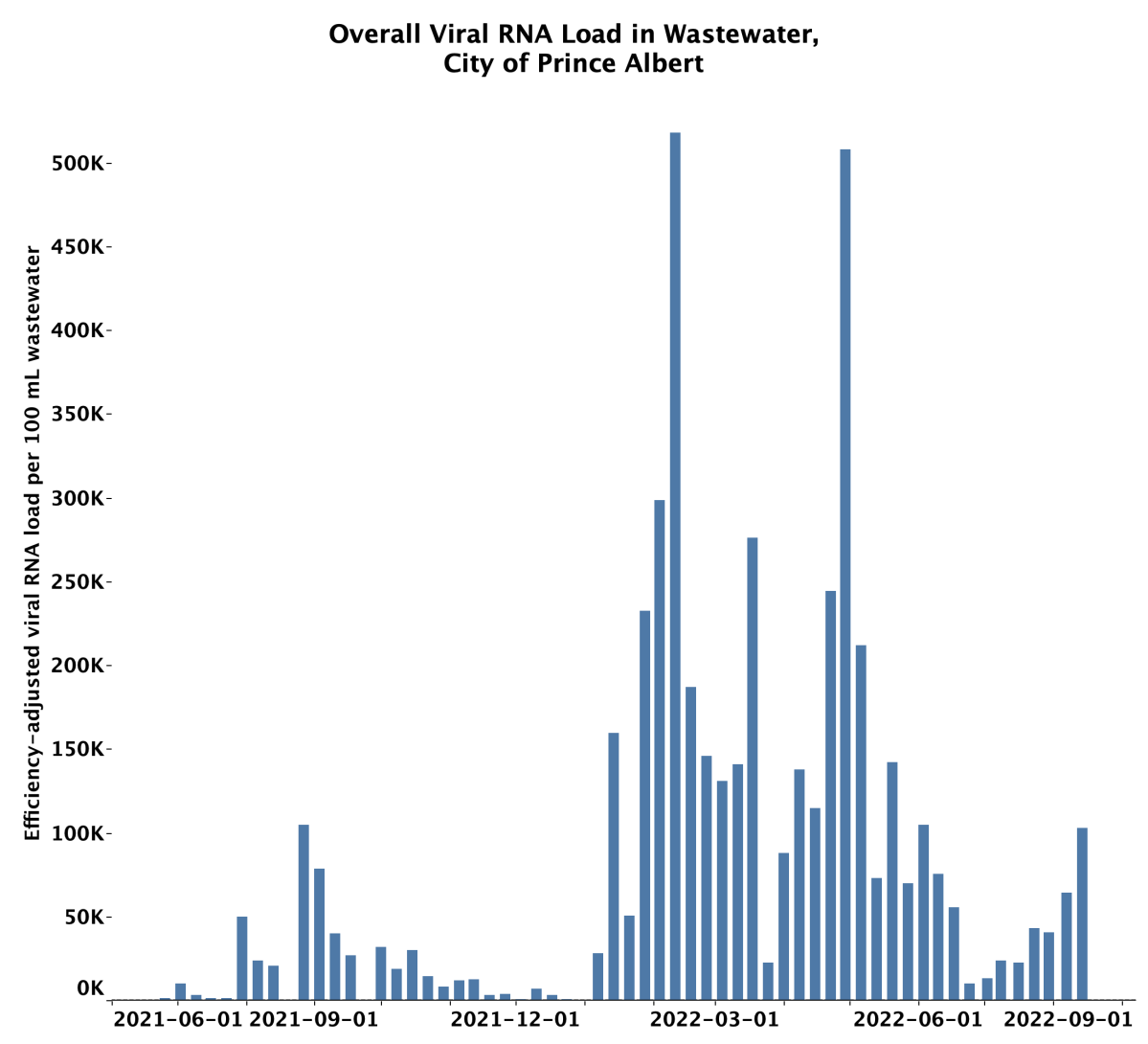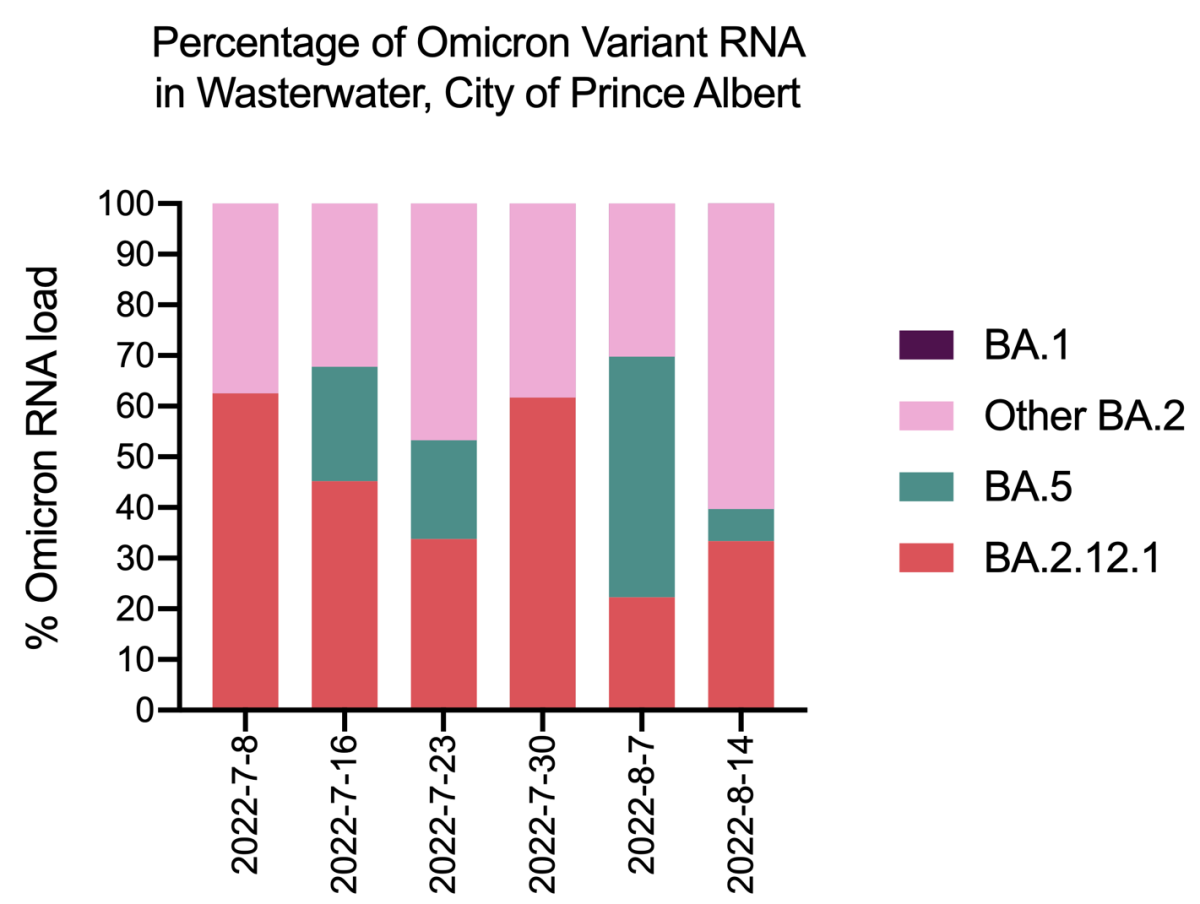The COVID-19 viral RNA load found in Saskatoon‘s wastewater has gone up 43 per cent for the reporting period up to Aug. 10.

That’s according to University of Saskatchewan and Global Water Future researchers, who said this is based on averages of three individual daily measurements compared with the weekly average of the previous week.
It was noted in the weekly wastewater report that the amount of viral particles listed in Saskatoon, North Battleford and Prince Albert are considered large because they’re greater than a 10-week average recorded in those cities.
This was the fourth consecutive increase in Saskatoon’s viral load since July 16.
The majority of the RNA load found in Saskatoon’s wastewater was the BA.5 variant.
The proportion went down 0.8 percentage points to 45.2 per cent, but researchers said that number only represents Aug. 5, with the other two days still being confirmed.
BA.2.12.1 made up 34.4 per cent of the RNA load in Saskatoon, with other BA.2 variants making up 20.41 per cent.
The COVID-19 viral RNA load found in North Battleford rose 93.2 per cent in the reporting period up to Aug. 6, with the report noting a 16.1 percentage point increase in the BA.5 variant viral load.
BA.5 made up 48.5 per cent of the RNA load in North Battleford, with BA.2.12.1 making up 30.4 per cent, and 37.5 per cent registering as other BA.2 variants.
Prince Albert saw the wastewater viral load rise 60.6 per cent for the reporting period up until Aug. 8, with the BA.5 variant dropping by 41.3 percentage points, making up 6.3 per cent of the total viral load.
BA.2.12.1 made up 33.4 per cent of Prince Albert’s total viral load, with other BA.2 variants making up 64.5 per cent.
Dr. Femo Oloye, a University of Saskatchewan toxicologist, noted that one week of increasing numbers tells us nothing, but a consistent increase in the viral load numbers over a number of weeks tells a better story.
“With this, I can confidently say we are in the 7th wave,” said Oloye.

Get weekly health news
“To look at it compared with the past 10 weeks, I see it’s more than the average of that, far, far more than the average of it. So that just tells us that we are in a new phase.”
Oloye added BA.5 hasn’t completely overtaken Saskatoon, and noted that the foot traffic through Saskatoon compared to other cities in Canada is why we aren’t seeing the variant take over.
“Because of our population size, I think that’s one of the reasons why what we see in some places we don’t easily see here. And the number of new people coming in from other places is low compared to what you see in Toronto, and what you’re seeing in Calgary or B.C.”











Comments